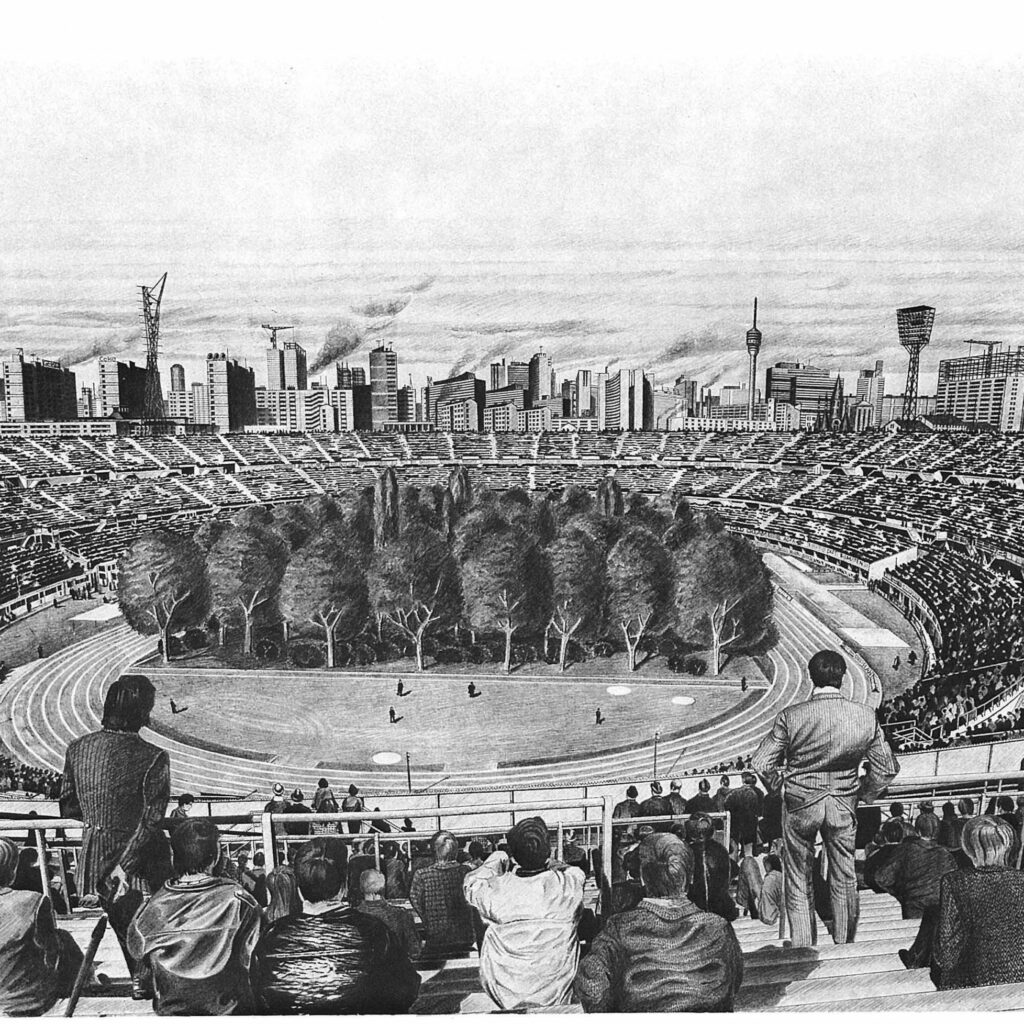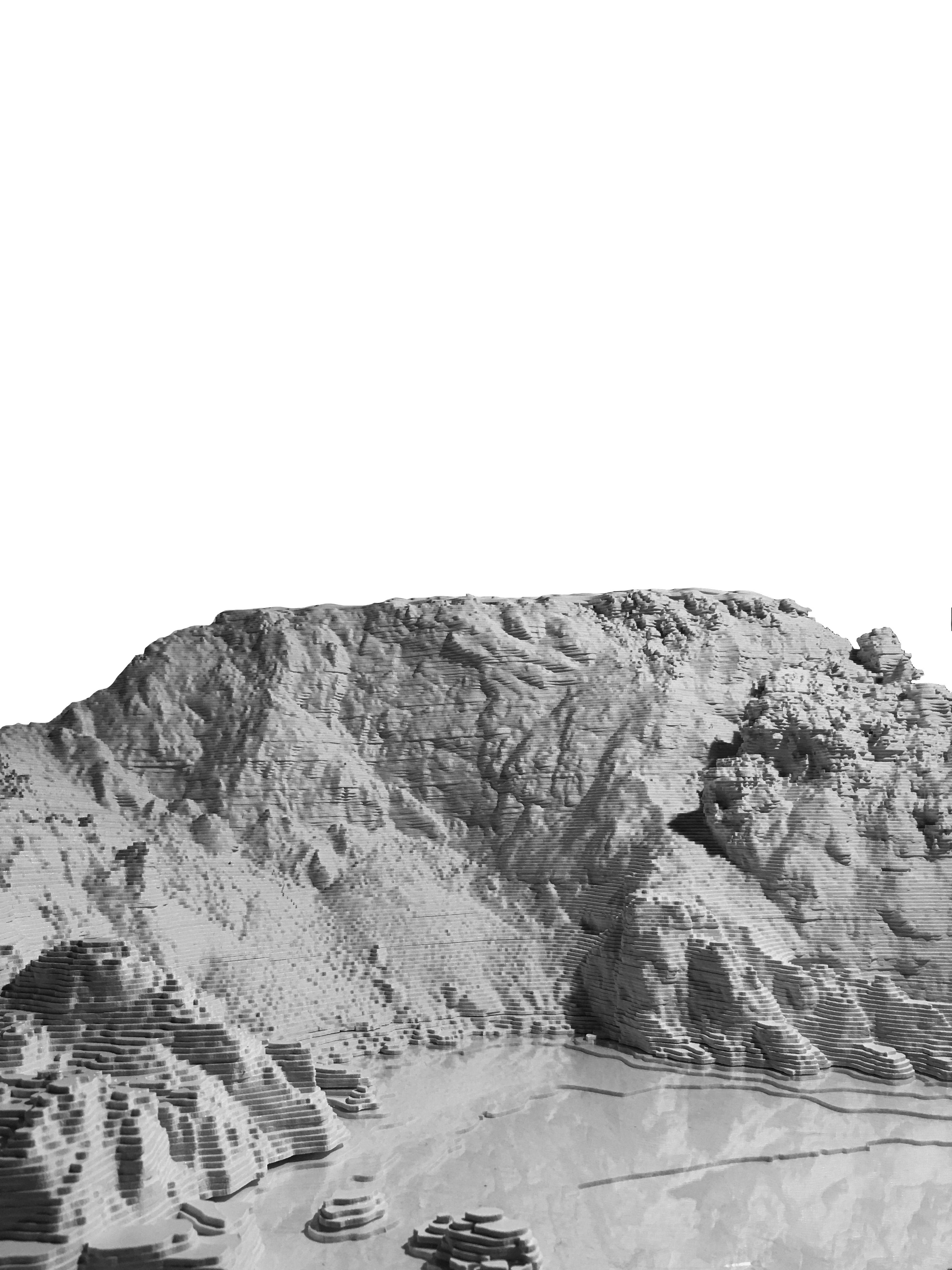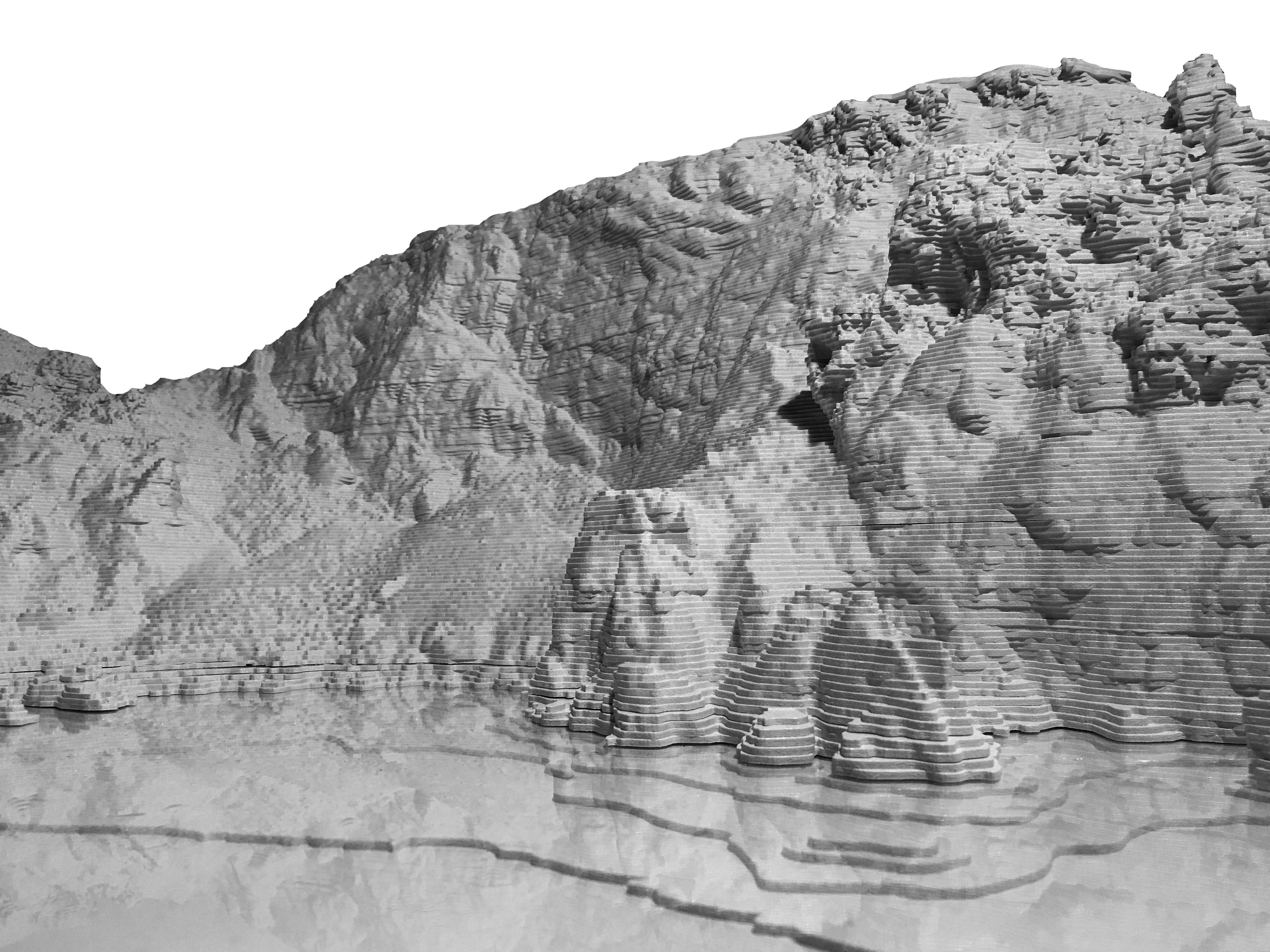Future Monuments
Humans have always had a need to materialize events and memories in their lifetime. There seems to be a natural human urge to stretch ideas and memories over centuries through objects or monuments.
This thesis aims to explore how events from the anthropocene, more specifically climate change, can be immortalized through a series of structures. These structures will adress different types of climate change, such as sea level rise, drought and forest fires. The base for the design is the current projections on climate change in a span of a thousand years.
To determine and record site specific details for the design proposal, several different site mappings is used. These details are later on used as a base for simulations and experiments with the design proposal, enabling representations of possible future scenarios.

Through explorations, materials that has a longevity to outlast the thousand year span is explored, as well as their deterioration. How their deterioration unfolds and how the landscape changes is a big outpost for designing for a thousand years, and therefore, the material’s deterioration is a design tool in archiving past events and landscapes. Literature studies in what monumentality and memorialization means in architecture and anthropology serves as a tool to frame the meaning of the monuments and their role in present as well as future sense.
When erected, they are beacons that through different ways, visualize climate change. During the thousand year span, they are archives and beacons. Archives that trace back to what was, but also projects whats to come, constantly reminding us about the climate crisis and longevity. If humans go extinct, the events of climate change are materialized and tells a story of what happened during the 21st century to humans that reinhabit the place after the climate crisis.


